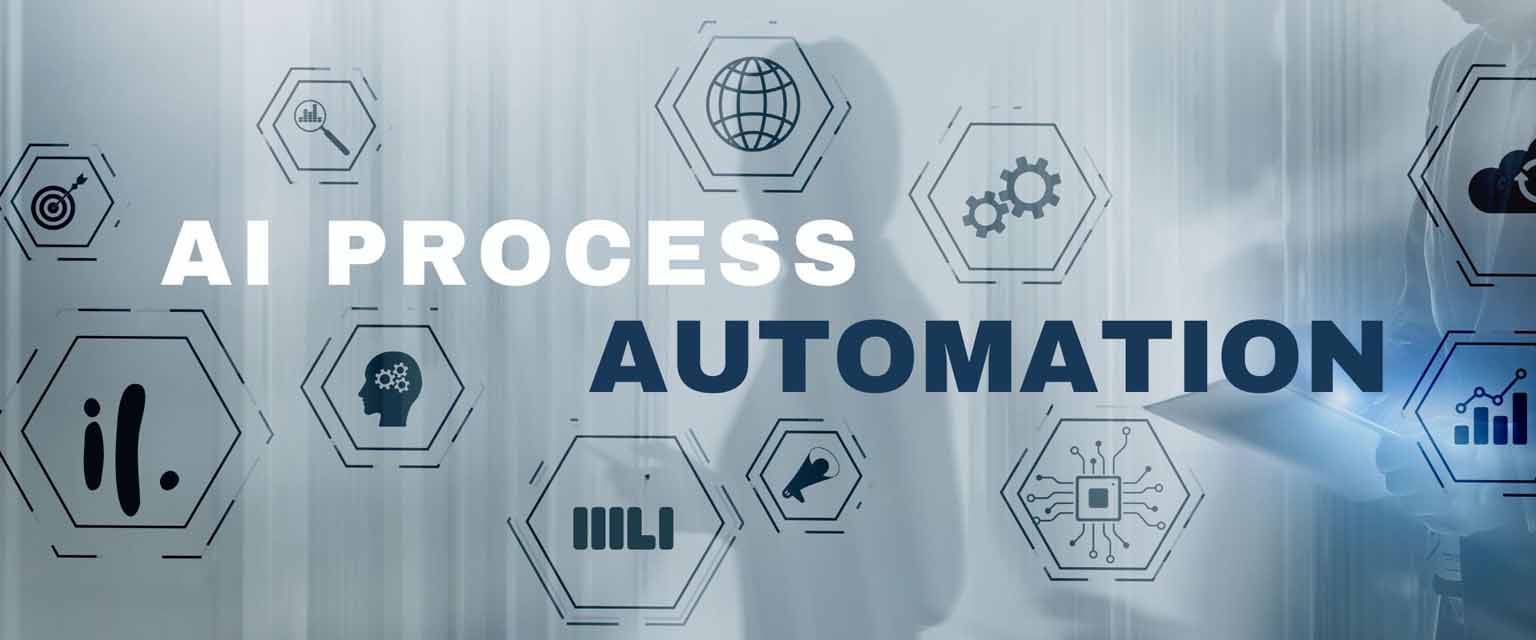Artificial Intelligence Process Automation: Details for Modern Business

In this fast-paced world of ever-evolving technology, it can be hard to keep up. One minute you're getting the hang of cloud computing, the next minute artificial intelligence process automation is the name of the game. But don't worry! In this blog post, we're going to break down the ins and outs of artificial intelligence process automation, or as we affectionately call it, AI process automation.
1. What is Artificial Intelligence Process Automation?
So, what is this 'Artificial Intelligence Process Automation' we speak of? Well, think about it this way: you know how you can set your coffee machine to brew a pot at 7am every morning? That's a basic form of automation. Now, imagine if your coffee machine could also order more beans when it senses you're running low, and even pick the best brand and grind based on your past preferences. That's AI process automation.
AI process automation, in the context of business, is all about using artificial intelligence technologies to automate manual and repetitive tasks. It's like having a super-efficient, tireless digital worker who can handle anything from data entry to customer service inquiries. Here are the main elements of AI process automation:
- Machine Learning: This is the brain behind the operation. Machine learning algorithms allow the system to learn from data and improve over time.
- Natural Language Processing (NLP): This feature enables the system to understand and respond to human language, making it versatile in customer service roles.
- Robotic Process Automation (RPA): This is the muscle. RPA handles the actual task execution, whether it's entering data into a spreadsheet or sending a follow-up email.
- Data Analytics: The insight. By analyzing data patterns and trends, AI process automation can help businesses make more informed decisions.
So, in essence, artificial intelligence process automation is like having a tireless, super-efficient, and constantly learning digital worker at your disposal. And who wouldn't want that, right?
2. How does AI Process Automation Impact Modern Business?
Now that we've defined artificial intelligence process automation, the next question that might be buzzing in your mind is, "But how does this impact my business?" Well, in more ways than you might think.
Streamlined Operations
Firstly, AI process automation streamlines operations. It takes over the repetitive tasks that could take hours for a human to complete. From document management to customer service, AI process automation can handle a wide range of tasks, freeing up your employees to focus on more strategic, high-level work.
Imagine a workday without the hassle of manual data entry—sounds dreamy, right? The potential for increased productivity and efficiency is immense.
Cost Savings
Let's talk dollars and cents. Implementing artificial intelligence process automation can lead to significant cost savings. How? By reducing the need for human intervention in mundane tasks, you're not only saving on labor costs but also minimizing the risk of human error, which can be costly to fix.
Sure, there might be initial investment costs, but the long-term savings and efficiency gains can far outweigh these.
Competitive Advantage
In today's digital age, staying ahead of the curve is key. Businesses that leverage AI process automation are likely to have an edge over those that don't. In a world where speed, efficiency, and customer satisfaction can make or break a business, the benefits of AI process automation can't be denied.
For example, think about how quick and personalized customer service can boost your brand reputation. Or how fast, accurate data analysis can inform your business decisions. It's like having a secret weapon in your business arsenal.
Employee Satisfaction
Lastly, let's not forget your most valuable resource—your employees. By relieving your team of monotonous tasks, you're allowing them to focus on what they do best—innovate, create, strategize. This can lead to increased job satisfaction and employee retention. After all, who wouldn't prefer to spend their day solving problems and creating value, instead of doing tedious data entry?
So, from streamlining operations to boosting employee satisfaction, AI process automation has the potential to revolutionize the way we do business. And that's no small feat!

3. Practical Steps to Apply AI Process Automation in Your Business
We've established what artificial intelligence process automation is and how it can benefit your business. Now it's time to put words into action. So, where do you start? Here's a handy guide to get you going:
Identify the Right Processes
First things first—you need to identify which business processes are ripe for automation. Look for tasks that are repetitive, time-consuming, and don't require a lot of human judgment. These make the perfect candidates for AI process automation.
Select the Right Tools
Next, you need to choose the right tools for the job. The market is flooded with AI process automation tools, each with its unique features and benefits. Do your homework, evaluate your options, and pick the one that fits your needs and budget.
Pilot and Test
Once you've identified the processes and selected the tools, it's time to do a pilot run. Implement the AI process automation on a small scale first and monitor the results. This will help you identify any issues or glitches before you go full-scale.
Train Your Staff
Remember, AI process automation doesn't replace your employees—it empowers them. So, make sure they're trained to use the new tools effectively. This will not only ensure a smooth transition but also help your team see the benefits of AI process automation firsthand.
Review and Scale
After the initial implementation and training, it's time to review the results. Is the AI process automation meeting your objectives? Are there any areas that need improvement? Once you're satisfied with the results, you can start scaling the automation to other parts of your business.
Applying artificial intelligence process automation in your business might seem like a daunting task, but with careful planning and execution, it can be a game-changer. So, are you ready to take the leap into the future of business?
4. Case Studies of Successful AI Process Automation Implementation
Now that you have the practical steps to implement AI process automation in your business, let's take a look at a few examples of companies that have successfully navigated this journey. These case studies will illustrate the benefits of AI process automation and might just inspire you to kickstart your own AI journey.
Spotify: Personalizing User Experience
Who doesn't love a personalized playlist? Spotify, a popular music streaming platform, uses AI process automation to enhance user experience. By automating the process of analyzing user behavior, Spotify creates customized playlists for each user. The result? Users spend more time on the platform, leading to increased revenues for Spotify.
Amazon: Streamlining Operations
Amazon, the e-commerce behemoth, uses AI process automation to streamline operations. From inventory management to order fulfillment—Amazon has automated several processes, leading to reduced operational costs and improved customer satisfaction.
Netflix: Improving Content Recommendation
Netflix, the leading video streaming service, uses AI process automation to improve its content recommendation system. By analyzing user preferences and viewing habits, Netflix can suggest tailored content to each user. This has resulted in increased viewer engagement and retention.
These examples clearly illustrate the power of AI process automation. They show that, no matter the size or nature of your business, implementing AI process automation can lead to improved efficiency, reduced costs, and enhanced customer satisfaction. So, are you ready to follow in the footsteps of these successful companies and start your own AI process automation journey?
FAQs on Artificial Intelligence Process Automation: Details for Modern Business:
#1: What is Artificial Intelligence Process Automation?
Ans. Artificial Intelligence Process Automation is the use of AI technologies to automate manual and repetitive tasks in business processes. It involves machine learning, natural language processing, robotic process automation, and data analytics to streamline operations, reduce costs, and improve efficiency.
#2: How does AI Process Automation impact modern business?
Ans. AI Process Automation impacts modern business in several ways. It streamlines operations by automating repetitive tasks, leading to increased productivity and efficiency. It also saves costs by reducing the need for human intervention and minimizing the risk of errors. AI Process Automation provides a competitive advantage by enabling businesses to stay ahead of the curve and deliver faster, more personalized services. Lastly, it boosts employee satisfaction by freeing up employees to focus on more strategic, high-level work.
#3: What are the practical steps to apply AI Process Automation in your business?
Ans. The practical steps to apply AI Process Automation in your business include identifying the right processes for automation, selecting the right tools, piloting and testing the automation on a small scale, training your staff to use the tools effectively, and reviewing and scaling the automation based on the results. By following these steps, you can successfully implement AI Process Automation in your business.
#4: What are some case studies of successful AI Process Automation implementation?
Ans. Some case studies of successful AI Process Automation implementation include Spotify, which uses AI to personalize user playlists; Amazon, which automates inventory management and order fulfillment; and Netflix, which improves content recommendations using AI. These examples demonstrate the benefits of AI Process Automation in enhancing efficiency, reducing costs, and improving customer satisfaction.



